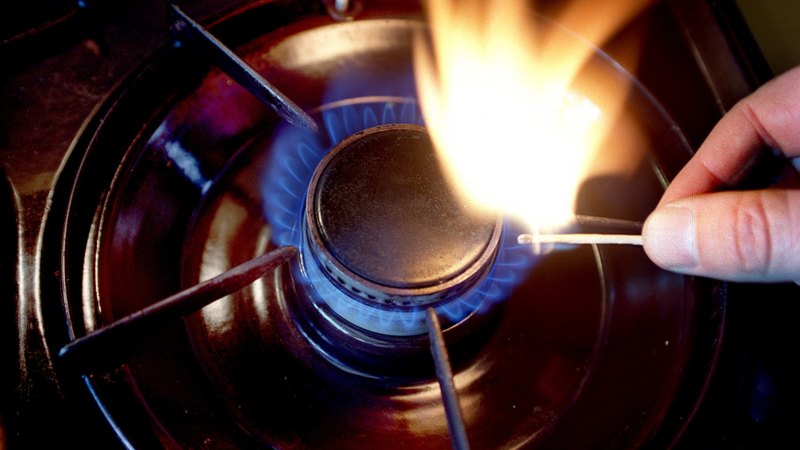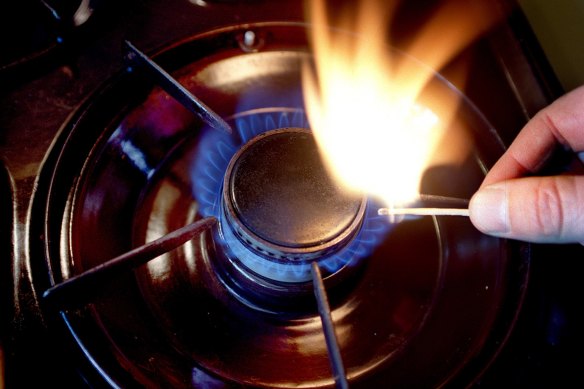Save articles for later
Add articles to your saved list and come back to them any time.
Households cutting their carbon footprints by switching from gas to cleaner electric appliances could double demand for gas-fired electricity at peak times in the coming years, new forecasts show, deepening the threat of winter gas shortfalls.
Reducing household gas consumption would drive down emissions and help reach state and federal climate targets, and is being supported by electrification initiatives in some states and territories as a key way for individuals to reduce carbon emissions.
Swapping gas appliances for electric models raises questions over gas supply on days of extreme demand in the power grid. Credit: John Woudstra
However, new forecasts show switching to electric appliances could also raise the risk of adverse consequences for energy security on days of high demand, particularly if a winter snap fuelled a surge in demand for electric heaters at the same time as a slump in output from wind and solar farms.
The Australian Energy Market Operator (AEMO) has warned this could create the need for up to twice as much gas to fire up power plants compared with a cold snap that occurred this year.
“The winter maximum daily demand for gas generation is forecast to nearly double between 2023 and 2042 as the National Electricity Market’s winter load increases with electrification of winter heating loads,” said AEMO’s recent report on gas supply.
Despite the potential for surges in gas demand during weather emergencies, the chief executive of think tank ClimateWorks Australia, Anna Skarbek, said the benefits of switching from gas to electric appliances, to both hip pockets and the planet, were clear.
“Overall gas use reduces and the [carbon] emissions fall, you avoid the cost of the gas and the air quality problems that are being uncovered now,” she said.
The benefits from appliance switching were significantly boosted by also upgrading the energy efficiency of houses, Skarbek said, noting a properly insulated house saves energy when it heats more quickly and stays warm for longer.
“A focus on whole-of-house energy performance helps lower electricity bills for the household and the system-wide peaks in electricity demand. Putting appliance switching and household energy performance together should be a key policy focus for governments.”
An AEMO spokesman said a forecast shortage of gas supply in NSW and Victoria, where no new gas projects are under development, could require use of emergency diesel generators in periods of peak gas demand – most likely in a winter cold snap as households switch on their heaters.
Gas power plants supply about 10 per cent of the electricity on the east coast, and that is expected to increase due to demand for what’s known as “firming” or “dispatchable” power via quick-start gas plants.
There will be increasing demand for gas as well as other forms of firming in hydropower and large-scale batteries, which can respond to gaps created in the grid when the sun isn’t shining and the wind isn’t blowing.
AEMO has forecast that the firming capacity available must triple by 2050 to enable the grid to reach net zero emissions and provide stable electricity supply while it is dominated by renewable generation.
As gas fields in Bass Strait, which have traditionally supplied the bulk of east coast gas demand, are rapidly drying up, AEMO has warned Victoria could face gas shortfalls as soon as this winter if a burst of cold weather drives up heating usage at the same time as a slump in output from wind farms or breakdowns at coal-fired power plants.
By 2027, states including Victoria, NSW and South Australia would face yearly gas supply deficits unless new gas supplies were made available, AEMO said.
Another complicating factor for gas supply is capacity limitations on the pipeline from Queensland to NSW and Victoria.
Cut through the noise of federal politics with news, views and expert analysis from Jacqueline Maley. Subscribers can sign up to our weekly Inside Politics newsletter here.
Most Viewed in Politics
From our partners
Source: Read Full Article


